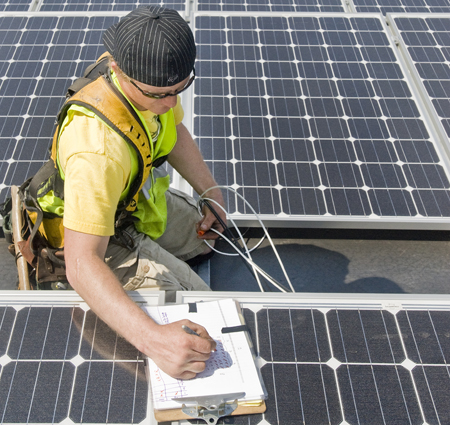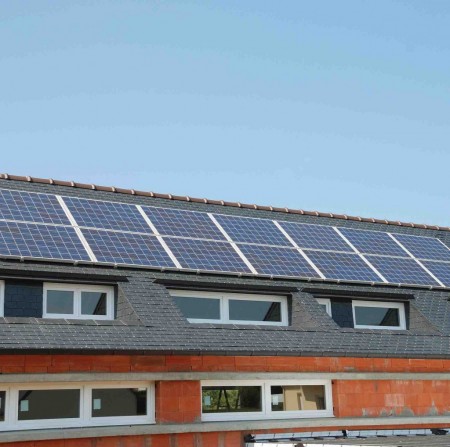A relatively new addition to the world of solar power systems is the concept of solar leases. A solar lease can provide a path toward solar energy integration for home and small business owners that might otherwise be unable to make such an investment. In this article we’ll take a look at what is involved in a solar lease, how some of these programs work and discuss one solar energy company’s recent adoption of solar leases and how it integrate these programs into its business model.
In the last year or so, solar lease programs have gained in popularity. According to the National Renewable Energy Laboratory, this may be due to the fact that on January 1, 2009, a $2,000 cap that was placed on the federally sponsored residential investment tax credit (ITC) was lifted. With this cap gone, more funds are available to be leveraged for residential solar installations. In addition, many states have put together some pretty compelling renewable energy tax credits that can be tacked on top of federal credits. A state by state listing of renewable energy tax credits, including solar, are available at sites like the Database of State Incentives for Renewables and Efficiency (DSIRE).

Even with government assistance, however, the up-front costs for solar installations still put the technology out of reach for many. Solar leases make an attractive option because they wrap the up-front costs into a long term lease agreement and are paid over time. With many of these lease programs, the solar system can be purchased at fair market value once the contract is completed.
We spoke with Rusty Pittman, head of marketing at SolarWorld Americas, about the company’s lease program and how it manages it. He told us that SolarWorld launched its lease program at the beginning of this year and that, through the program, customers use the electricity that is generated from the leased system. Using solar energy reduces the use of utility provided power from the grid and, thus, reduces energy bills. The idea is that the savings that the customers experience in their electricity bills exceeds the lease payment. In this way, the customer gets to enjoy a decrease in monthly expenses whilst also paying toward the installed solar system.
Solar leases are not necessarily the best option for everyone, however. For companies like SolarWorld that work with third party investors to finance the solar lease programs it administrates, an applicant must meet certain criteria. A credit check is required and other qualifying factors are involved as well.
As Mr. Pittman explained, part of SolarWorld’s approach is to start the evaluation process with a site assessment. While at a residence, an installer from the company’s installation network goes over the home and determines, foremost, if solar is right for the site. If it is, the installer takes into consideration the anticipated energy generation capacity of the system, the customer’s electricity bill, local and federal tax incentives and rebate programs. These factors, along with the credit check, will help determine if a solar lease is a viable solution.
There are other ways to go about financing a solar installation. A home equity loan, for instance, can provide some key benefits because it allows the homeowner to write off the interest on the loan. Also, federal and state tax incentives are paid to the homeowner when the solar system is purchased rather than leased. As Mr. Pittman pointed out in our conversation, however, market conditions have placed many home owners “upside down” on their mortgages, an economic issue that may eliminate a home equity loan as an option.

One of the challenges facing solar lease programs is awareness. Because they are relatively new, many people simply don’t know that these programs exist. The other is a matter of understanding solar power and its capabilities. When suggested to Mr. Pittman that people who live in typically dark and/or rainy regions of the nation, such as the Pacific Northwest, could be under the impression that solar is not an option for them, he responded by indicating that today’s solar technology can generate energy, even under less than brightly sunny conditions. He also cited the country of Germany as an example of solar flourishing in typically overcast conditions. Pittman said that, while the country of Germany experiences less direct solar radiation on average than Oregon does, it has the world’s largest solar energy market.
In addition, Mr. Pittman pointed out that, unless a site is almost totally covered in tress, there’s a good chance that a solar system can provide real benefits. “Solar panels are capable of capturing more solar radiation than many people are aware of,” he said.
There are opponents of solar leases, as well. Some organizations have called out some potential pitfalls involved with solar leases. The National Association of Certified Home Inspectors, for example, points to the fact that some solar companies don’t account for advancing technology in their leases, leaving renters with no option for upgrades down the road. Also, any roof work that may need to be performed in the future will often require the removal of solar panels which can be costly.
Other critics of solar leases caution homeowners that, in the case of a lease, the federal and state incentives will go to the installer, not the homeowner. They also indicate that requiring prospective home buyers to assume a solar lease as part the sale could make the home less attractive. Potential lease payment increases should also be taken into consideration as some leasing contracts do not fix the payment amount. To be sure, it appears that a careful review of lease contract terms should be completed prior to committing to any solar leasing program.
Solar leases are not yet available in every state. Because these programs are usually developed by solar manufacturers, whether a solar lease is available in a given area is usually a function of whether or not a solar manufacturer has an installer within its network that services said area. However, given the growing popularity of these leasing programs, it is likely that more and more states will begin to see this option in time.